#Grain #Grace #Exquisite #Biedermeier #Wood #Veneers
When you look closely at an authentic Biedermeier wood veneer piece, something extraordinary happens: the light dances across the surface, revealing a subtle shimmer, a flame-like pattern, or even a mirror-like symmetry. That magic lies not just in the design—but in the wood veneer.
The Biedermeier period (1815–1848) was a golden age of refined simplicity and craftsmanship in Central Europe, especially Austria and Germany. While the silhouettes of Biedermeier furniture reflect neoclassical restraint, its true artistry lies in the elegant use of veneers—especially rare species like Karelian birch. These veneers turned everyday furniture into understated yet luxurious showpieces.
In this post, we explore the materials and techniques that gave Biedermeier furniture its characteristic glow, and why those choices remain relevant for collectors and interior designers today.
Why Veneers Were Central to Biedermeier Aesthetics
Unlike earlier styles that often emphasized ornate carving, gilding, or inlay, Biedermeier artisans embraced a more minimalist approach. But make no mistake—this was not a turn toward plainness. Instead, they shifted the focus to the natural beauty of wood, choosing to highlight the grain itself.
Veneers offered several distinct advantages:
-
Visual impact: Thin slices of wood allowed artisans to display dramatic, patterned grain across wide surfaces—something solid wood often couldn’t do as elegantly.
-
Material efficiency: Veneering made rare woods like Karelian birch accessible in modest amounts, stretching beauty across more surfaces.
-
Design flexibility: Veneers allowed for bookmatching, radial patterns, and mirror symmetry that created a sense of balance and order.
In short, veneer work became the canvas on which the Biedermeier style was painted.
Karelian Birch: The Crown Jewel of Biedermeier Veneers
Arguably the most iconic veneer of the period, Karelian birch was prized for its swirling, marbled grain and golden tone. Native to the forests of Northern Europe—particularly Finland and parts of Russia—Karelian birch is a mutation of the silver birch that produces a dense, highly figured grain.
Biedermeier craftsmen used it sparingly but dramatically, often on fall-front desks, chests of drawers, and occasional tables. The shimmering appearance of Karelian birch made it the ultimate status symbol—a quiet luxury that fit the Biedermeier ideal of bourgeois elegance.
Even today, Karelian birch remains highly sought-after by collectors and artisans alike. It is rare, difficult to work with, and stunning to behold.
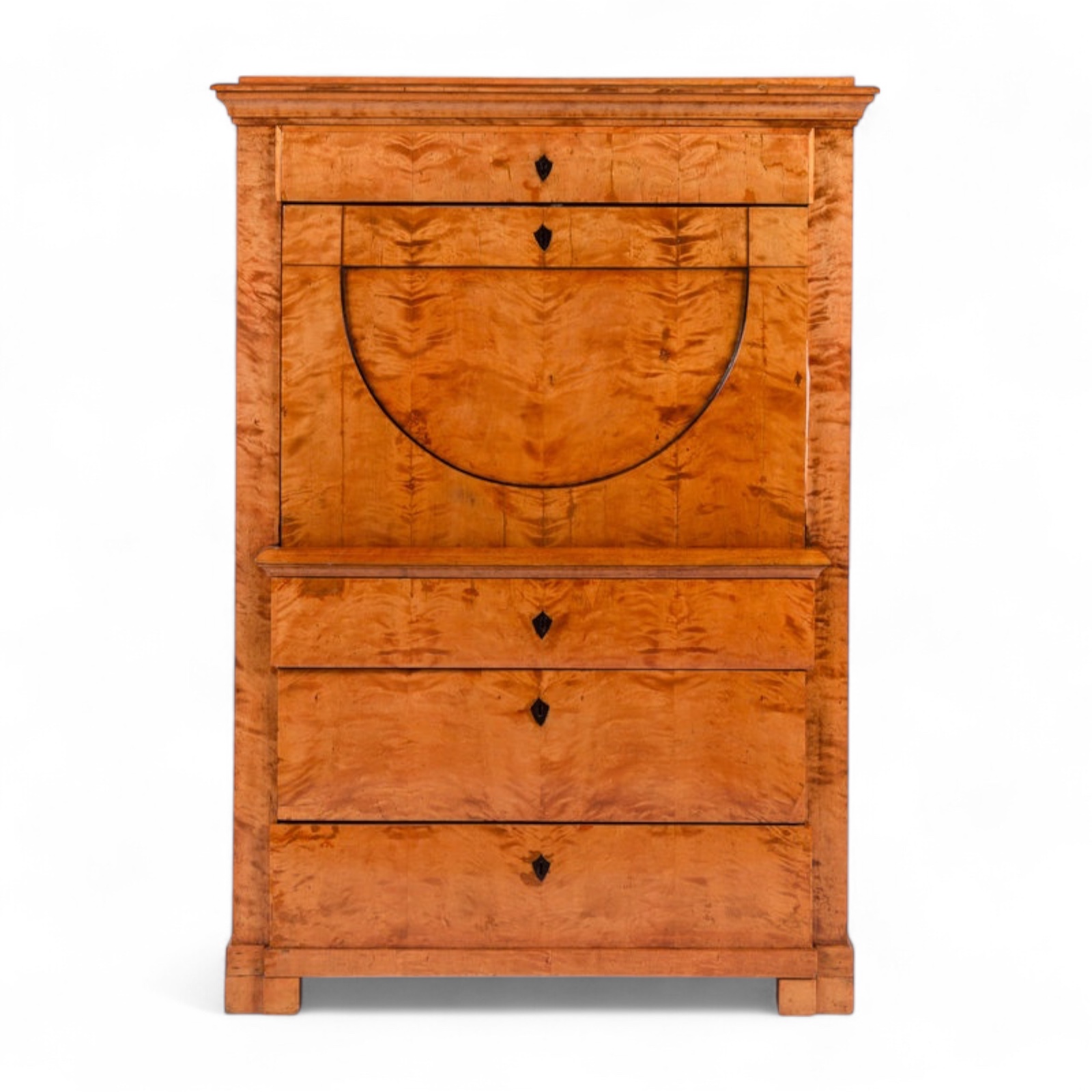
Other Wood Veneers in Biedermeier Furniture
While Karelian birch was the star, other veneers were equally important to the Biedermeier palette:
- Cherrywood: Warm and reddish in tone, cherry was a favorite for its smooth grain and gentle glow. It complemented the light-filled interiors of the time.
-
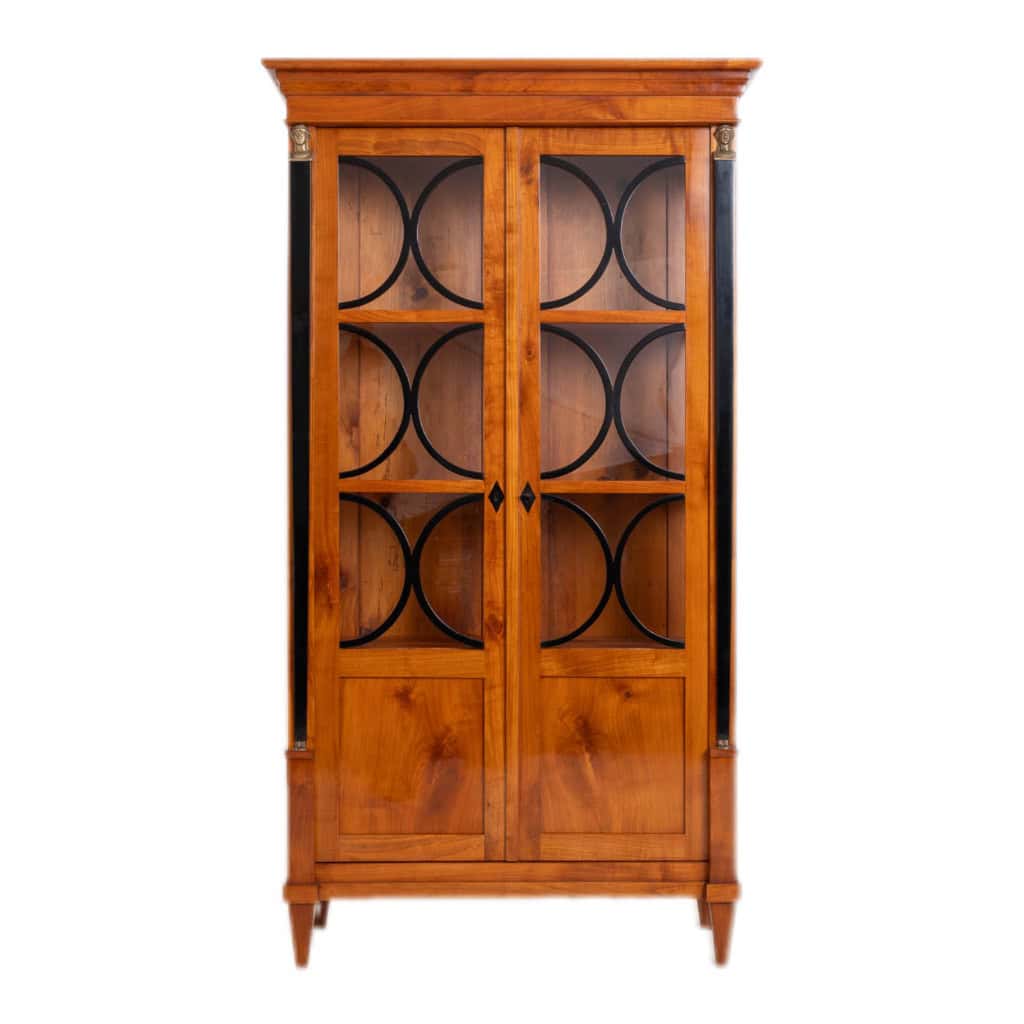

Biedermeier Glass Cabinet with cherry veneer- available on Styylish - Walnut: Darker and more dramatic, walnut added richness and contrast to otherwise light or neutral rooms.
-
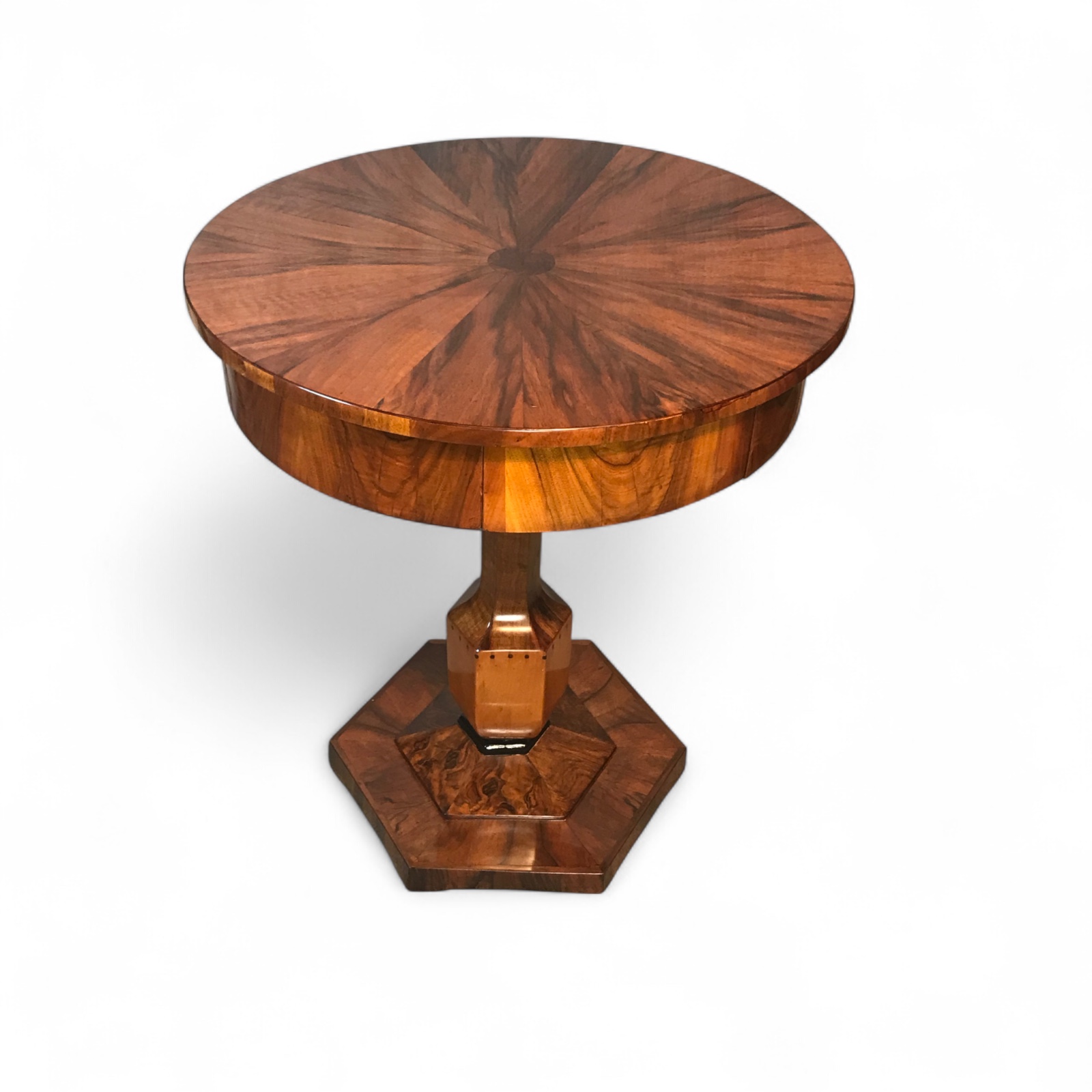

Biedermeier Side Table with walnut veneer- Styylish -
Elm and Ash: These were used regionally, valued for their golden hues and distinctive grain patterns.
-
Maple and Pearwood: Often used as secondary veneers, they provided subtle contrasts and refined transitions.
These woods were often paired with ebonized accents—thin borders or feet painted black to resemble tropical hardwoods—creating visual definition and balance.
The Techniques Behind the Shine
What made Biedermeier veneer work so special wasn’t just the wood—it was the technique. Craftsmen of the period employed meticulous methods to transform natural grain into geometric or organic works of art:
Bookmatching
This technique involves slicing a single piece of wood and placing the two pieces side by side like an open book. The resulting mirrored effect emphasizes symmetry and flow.
Radial Veneering
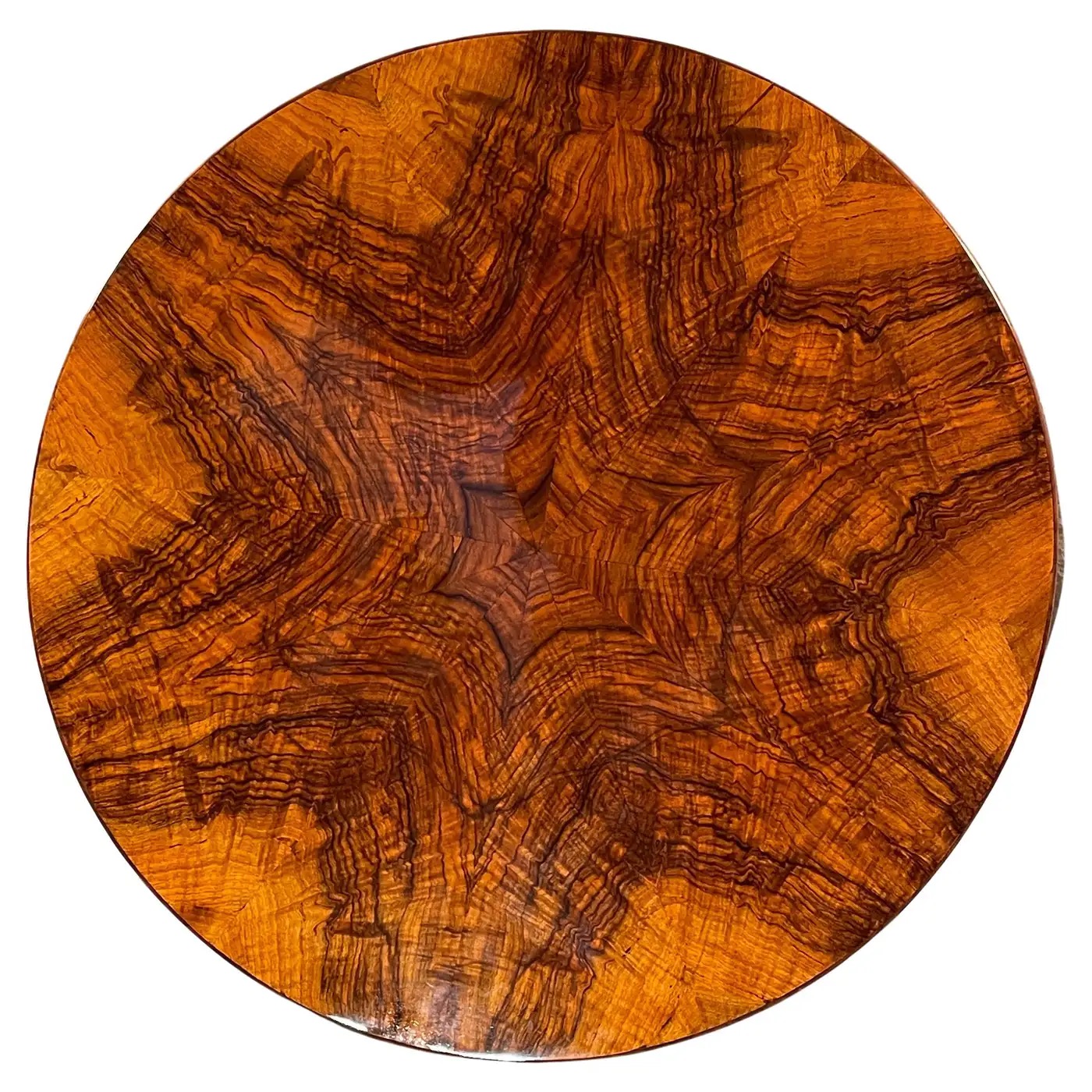

Also called “sunburst” or “fan” patterns, this technique arranges veneer slices in a circular or radiating design, often seen on tabletops or cabinet doors.
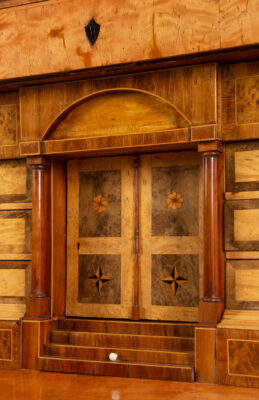

Marquetry and Inlay (Used Sparingly)
While Biedermeier avoided the excessive marquetry of earlier Baroque or Rococo styles, subtle inlays—usually linear or geometric—were used to frame or highlight veneer fields.
French Polish: The Signature Biedermeier Finish
One of the most distinctive surface treatments of Biedermeier furniture is the French polish—a labor-intensive finishing method that enhances the depth and luminosity of fine wood veneers.
Developed in the 18th century and widely used through the 19th, French polish involves applying many thin layers of shellac, dissolved in alcohol, using a rubbing pad made of cotton or wool wrapped in soft cloth. Each layer is carefully built up by hand in circular or figure-eight motions, followed by drying and additional polishing.
Why it matters:
-
Unmatched depth and shine: French polish gives the surface a rich, almost wet-looking gloss that accentuates the complexity of the grain.
-
Tactile beauty: The finish feels soft and smooth to the touch—almost like polished skin.
-
Breathable and reversible: Unlike modern synthetic finishes, French polish can be touched up without stripping the entire surface. This makes it a favorite among restorers.
In Biedermeier furniture, French polish was the final step in highlighting the natural drama of wood like Karelian birchor bookmatched walnut. It turned the furniture into glowing focal points that caught candlelight in 19th-century salons—and still captivate today in modern interiors.
While it requires upkeep and is sensitive to heat and moisture, French polish remains a mark of true craftsmanship and is still revered by collectors and conservators around the world.


Veneers vs. Solid Wood: A Misunderstood Distinction
Some mistakenly believe that veneer implies lower quality. In Biedermeier furniture, the opposite is often true. Veneers allowed cabinetmakers to showcase rare woods in artistic ways that solid wood simply couldn’t.
Moreover, veneered surfaces are often more stable than wide planks of solid wood, especially when properly constructed with traditional joinery on a solid carcass. This mix of durability and beauty is a hallmark of Biedermeier quality.
Collecting and Decorating with Veneered Biedermeier Pieces Today
Whether you’re a serious collector or an interior designer seeking warmth and refinement, veneered Biedermeier furniture brings timeless elegance to any space.
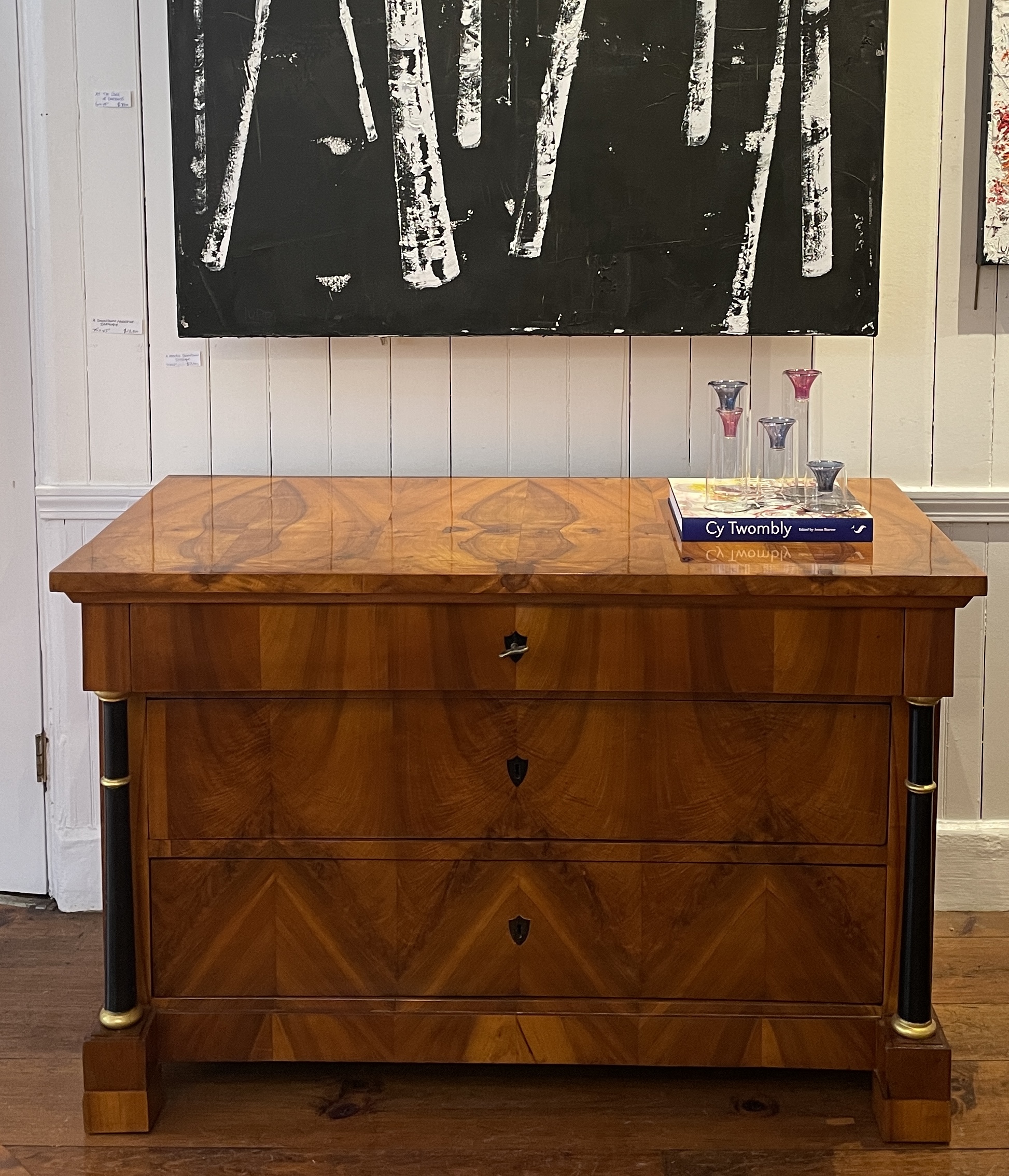

How to Recognize Quality:
-
Look for symmetry: Mirrored patterns are a telltale sign of thoughtful veneer work.
-
Examine the grain: High-contrast or “flame” figures, especially in birch or walnut, indicate artistry.
-
Check for restoration: Minor veneer repairs are normal, but well-preserved surfaces retain a silky glow.
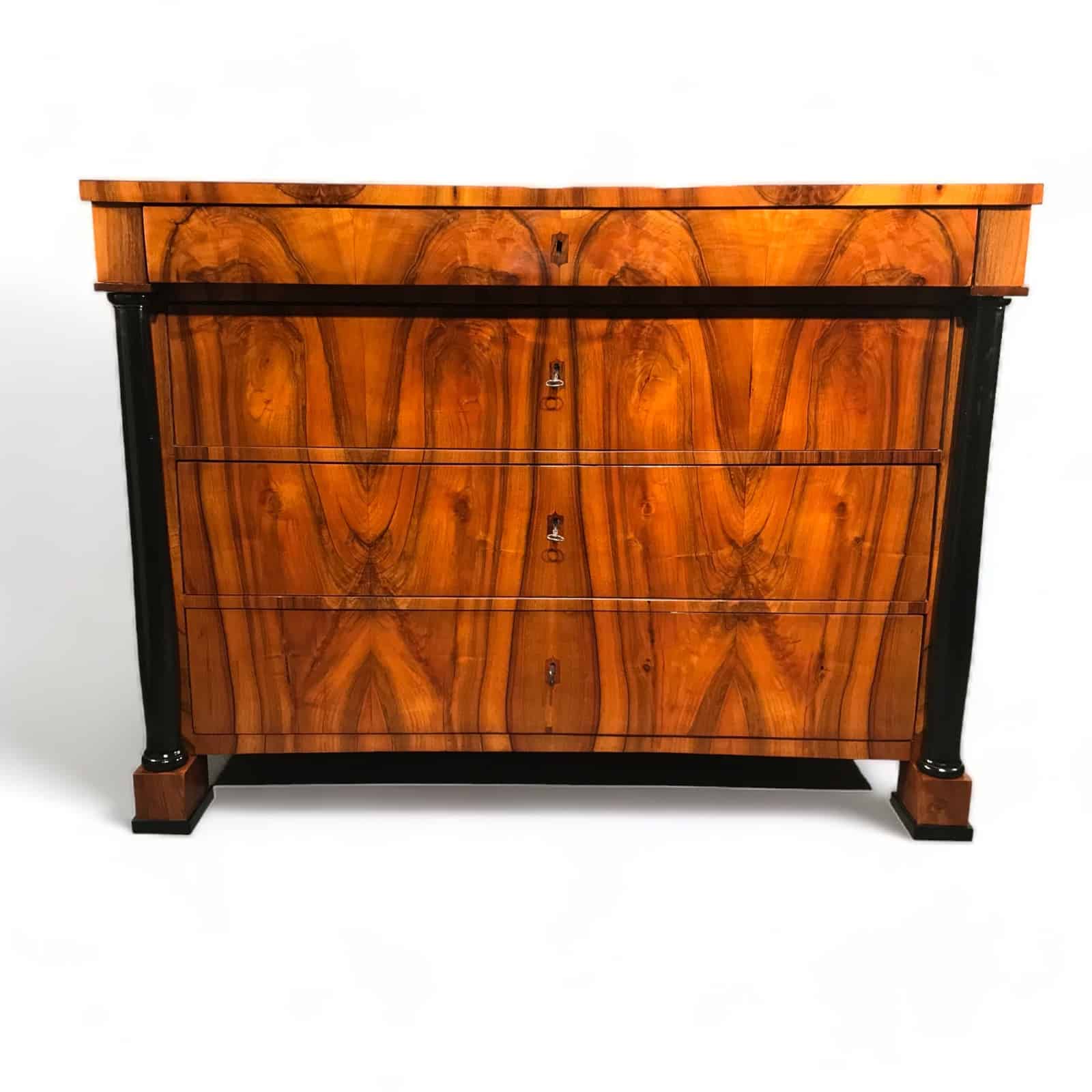

At Styylish, we curate exceptional Biedermeier pieces that showcase these very qualities—from fall-front desks with arched interiors to chests of drawers in honey-hued birch.
Conclusion: A Legacy of Natural Beauty
In the world of antique furniture, Biedermeier pieces stand apart for their quiet sophistication. And at the heart of that beauty lies the thoughtful use of veneer. From the rare Karelian birch to the warm glow of cherrywood, these thin slices of nature tell a rich story of craftsmanship, taste, and restraint.
To own a Biedermeier piece is to own a celebration of grain and grace—a legacy of artisans who let the wood itself do the talking.
Explore our curated collection of Biedermeier furniture featuring original veneers and masterful craftsmanship.


